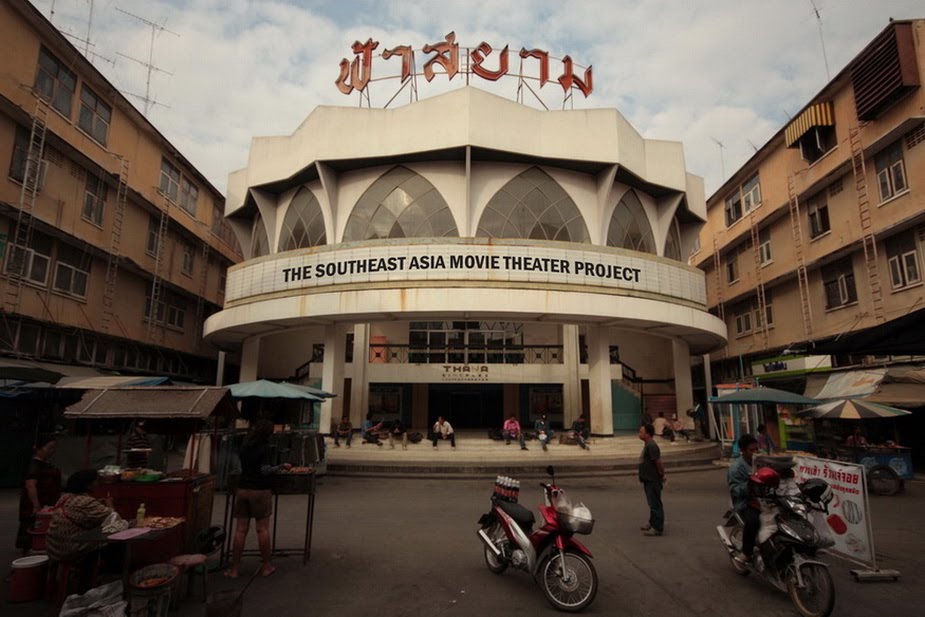 In 1927, the producer-director team of Merian C. Cooper and Ernest B. Shoedsack came to Siam to make a film about man's constant battle with the forces of nature. With the help of local factotums and translators, they ventured into what was then perceived to be the most remote, undeveloped region of the country. The American film-making duo took a train from Bangkok up to Uttaradit and then trekked and boated it for two 2 weeks through deep jungle til they reached the wilds of Nan province. They eventually settled in what is now the district of Pua and began work on their film Chang. The film was a hit in the United States and for most American viewers, their first glimpse of this part of the world.
In 1927, the producer-director team of Merian C. Cooper and Ernest B. Shoedsack came to Siam to make a film about man's constant battle with the forces of nature. With the help of local factotums and translators, they ventured into what was then perceived to be the most remote, undeveloped region of the country. The American film-making duo took a train from Bangkok up to Uttaradit and then trekked and boated it for two 2 weeks through deep jungle til they reached the wilds of Nan province. They eventually settled in what is now the district of Pua and began work on their film Chang. The film was a hit in the United States and for most American viewers, their first glimpse of this part of the world. 50 years after Chang was filmed there, Pua had its first ever brick and cement movie theater, the Pua Rama. Cooper and Shoedsack went onto to make the blockbuster King Kong in 1933.
50 years after Chang was filmed there, Pua had its first ever brick and cement movie theater, the Pua Rama. Cooper and Shoedsack went onto to make the blockbuster King Kong in 1933. For most of its movie showing years the Pua Rama Theater was operated by the husband and wife team of Pornsak and Surang Anugkawanit. Yet it was Surang's father - previously owner/operator of an old wooden theater in town - that built it. Pornsak and Surang's stewardship marked the 2nd consecutive generation of movie theater proprietors in the family, though the theater would not last long enough for their son to become the third.
For most of its movie showing years the Pua Rama Theater was operated by the husband and wife team of Pornsak and Surang Anugkawanit. Yet it was Surang's father - previously owner/operator of an old wooden theater in town - that built it. Pornsak and Surang's stewardship marked the 2nd consecutive generation of movie theater proprietors in the family, though the theater would not last long enough for their son to become the third.In the year 2003, producers for the Thai film Iron Ladies 2 scouted out the Pua Rama Theater for a scene in the movie.
 This is the only old Thai theater I've come across which still has the seats. Usually they are removed and sold off. Note that these seats were made of wood.
This is the only old Thai theater I've come across which still has the seats. Usually they are removed and sold off. Note that these seats were made of wood. Like most single screen theaters in Thailand that were built in the 1960's and 70's, the auditoriums were kept cool with industrial size fans that were built into the walls.
Like most single screen theaters in Thailand that were built in the 1960's and 70's, the auditoriums were kept cool with industrial size fans that were built into the walls.  30 years ago you would have found theater patrons hanging out here in the upper lobby. Now you only find clothing hanging out to dry.
30 years ago you would have found theater patrons hanging out here in the upper lobby. Now you only find clothing hanging out to dry. Surang and Pornsak Anugkawanit pose in what used to be the lobby of the old Pua Rama Theater. They now run a mini-mart from it. In the 1970's and early 80's the theater was regularly sold out, including standing room only. But as the story goes, by the 1990's single-screen theaters in small towns like Pua were feeling the squeeze of a bad economy, shrinking rural populations and the proliferation of home entertainment centers for the average family.
Surang and Pornsak Anugkawanit pose in what used to be the lobby of the old Pua Rama Theater. They now run a mini-mart from it. In the 1970's and early 80's the theater was regularly sold out, including standing room only. But as the story goes, by the 1990's single-screen theaters in small towns like Pua were feeling the squeeze of a bad economy, shrinking rural populations and the proliferation of home entertainment centers for the average family.The Anugkawanit family shut down the Pua Rama Theater in 1999.
-------------------------------------------------------------------------------------------------
 Poster for the Cooper and Schoedsack production of "Chang," which was filmed in Pua back in 1927.
Poster for the Cooper and Schoedsack production of "Chang," which was filmed in Pua back in 1927.














































